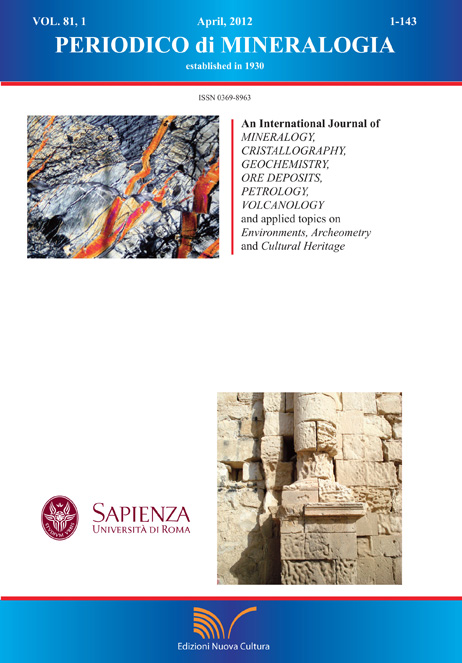Archaeometric evidence attesting production of indigenous archaic pottery at Monte Polizzo (Western Sicily)
DOI:
https://doi.org/10.2451/2012PM0007Keywords:
Western Sicily, Archaic age, native ceramic production, incised and matte painted tableware, thin section petrography, XRFAbstract
Excavations at the proto-urban indigenous settlement of Monte Polizzo (western Sicily) have not yielded so far any evidence of in-situ ceramic production (i.e. kiln structures). However several archaeological concerns put forward to consider it as a likely production centre of pottery during the Archaic age. In this paper a first attempt to check the compositional correspondence between ceramic fabrics and local clay sources has been made. A comprehensive archaeometric investigation of native pottery, mainly composed of matte-painted table ware dated from the 7th to the 4th century BC, recovered from the Acropolis of Monte Polizzo has allowed the identification of five distinct ‘Paste Compositional Reference Units’ (PCRUs). The five PCRUs were independently identified and confirmed through textural and mineralogical characteristics (petrographic observations) and chemical characterization (XRF analysis).
A parallel investigation of clayey raw material of Monte Polizzo’s natural resources revealed two geologic formations the Terravecchia and Marnoso-Areacea del Belice (MAB). Experimental ceramic briquettes were created and mineralogically and petrographically characterized. A comparison between the native and experimental ceramics revealed that the native ceramists preferred clays from the Terravecchia Formation.
The mineralogical, textural and chemical composition of the raw clays of the Terravecchia Formation resulted to be well correlated with the 92% of the native ceramic artefacts recovered from Monte Polizzo. The remaining 8% are interpreted to be imported from the Sicani Mounts area.


